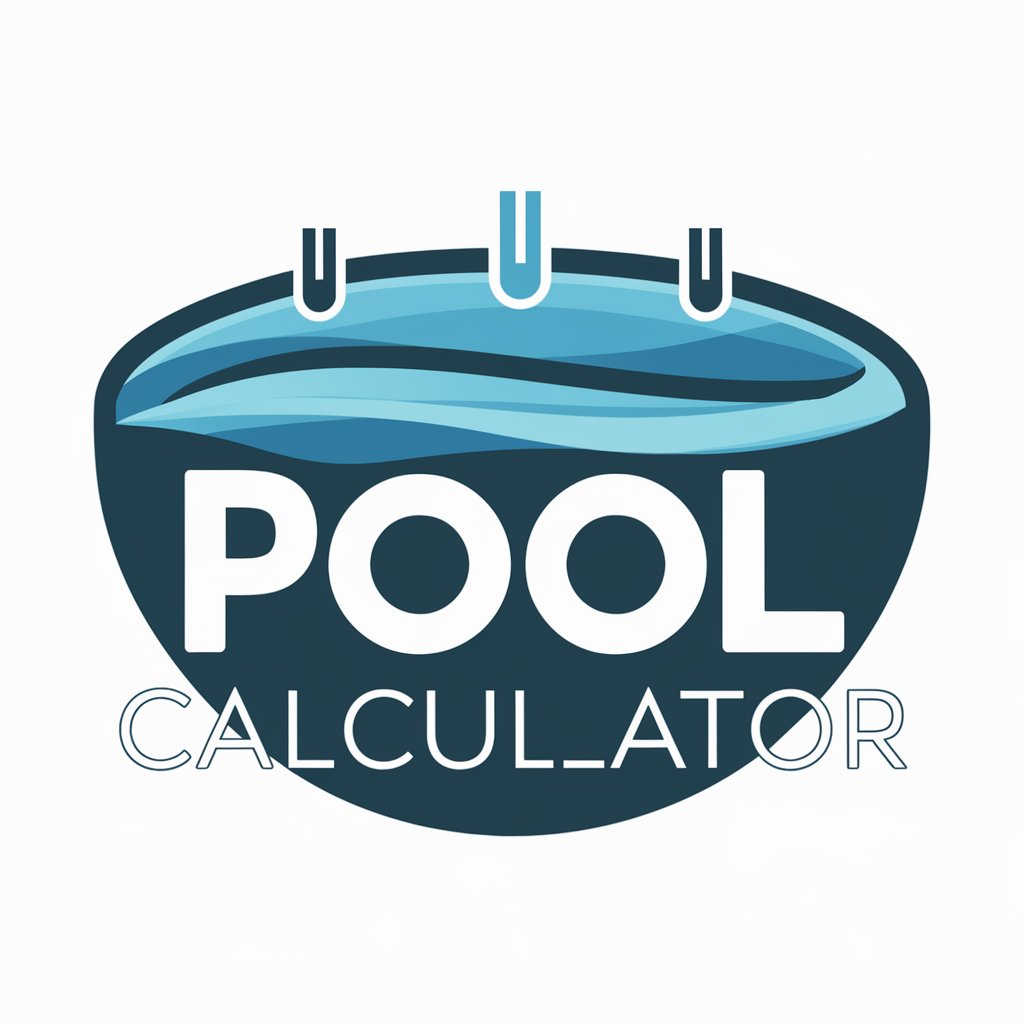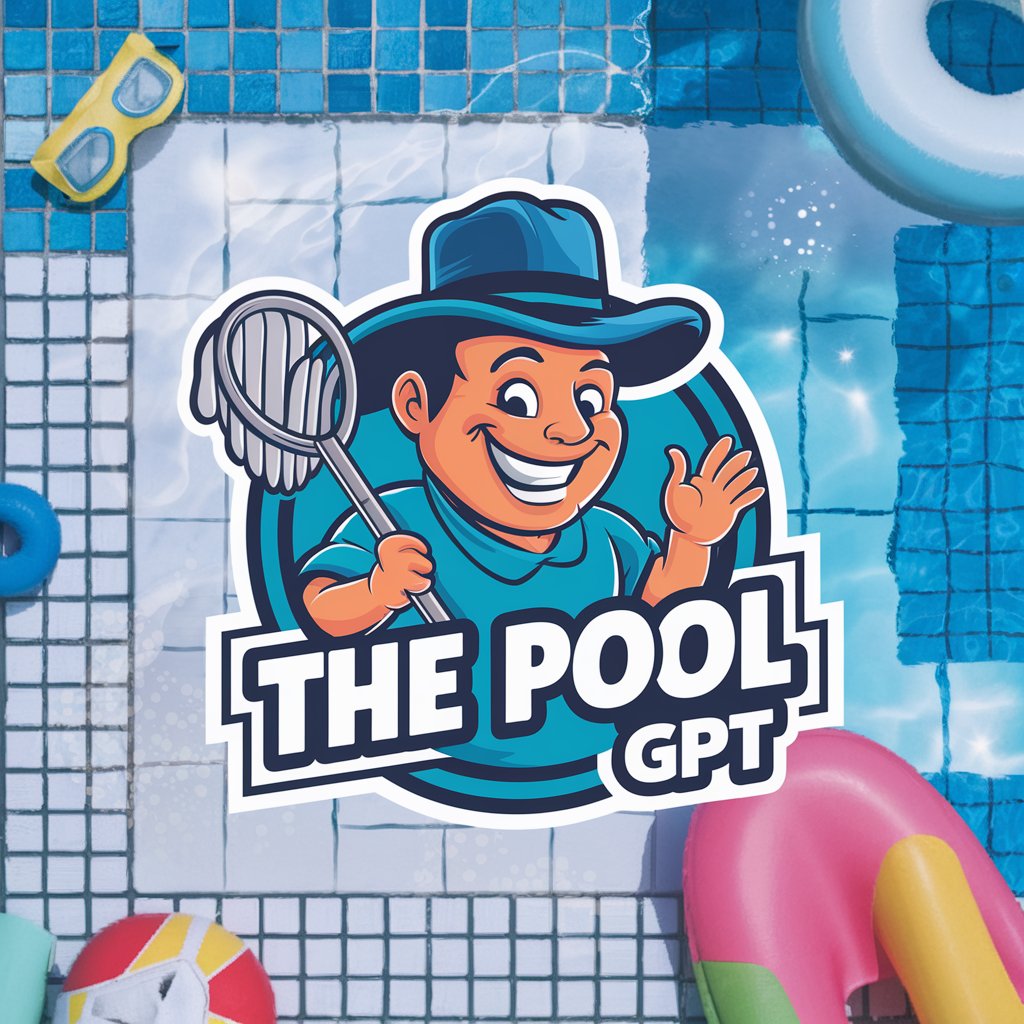
Pool Calculator - Pool Water Analysis

Welcome to Pool Calculator, your expert guide for perfect pool and spa maintenance!
Balance Your Pool with AI
What are the ideal pH levels for a swimming pool?
How often should I test my pool water?
What should I do if my pool has high alkalinity?
Can you guide me on balancing chlorine levels in my pool?
Get Embed Code
Overview of Pool Calculator
Pool Calculator is designed as a comprehensive tool for swimming pool and spa maintenance, focusing on water chemistry and balancing. Its primary goal is to provide users with detailed analyses based on water test results, guiding them through the necessary steps to achieve optimal water balance and cleanliness. This tool prioritizes addressing critical water imbalances and safety concerns, followed by general maintenance advice. For example, if a user inputs that their pool water has a high pH level, Pool Calculator would not only suggest adding muriatic acid but also explain how much to add based on the pool's volume, the current pH level, and the target pH level. This detailed guidance ensures users can effectively manage their pool or spa water quality, enhancing safety and comfort. Powered by ChatGPT-4o。

Key Functions and Real-world Applications
Water Test Analysis
Example
Upon receiving test strip results indicating high chlorine levels, Pool Calculator advises on reducing chlorine concentration to prevent irritation and potential damage to pool surfaces.
Scenario
A pool owner tests their water and discovers chlorine levels are significantly above the recommended range. Using Pool Calculator, they input these results and receive a tailored solution to safely lower the chlorine level.
Chemical Dosage Recommendations
Example
When informed about a low alkalinity level, the tool calculates the exact amount of sodium bicarbonate needed to raise the alkalinity to within the ideal range, considering the pool's specific volume.
Scenario
A spa owner finds the alkalinity levels are below the ideal range. By entering the spa's volume and current alkalinity level into Pool Calculator, they receive precise dosing instructions for correction.
Maintenance Tips
Example
Provides seasonal maintenance advice, such as winterizing techniques or summer usage tips, to ensure the pool remains in top condition year-round.
Scenario
As summer approaches, a user consults Pool Calculator for tips on preparing their pool for increased use. The tool offers advice on adjusting chemical levels, cleaning filters, and scheduling more frequent water testing.
Target User Groups for Pool Calculator
Home Pool and Spa Owners
Individuals or families owning residential pools or spas, seeking to maintain water quality and safety without professional help. They benefit from Pool Calculator by receiving easy-to-follow, precise guidance on balancing water chemistry and handling common water quality issues.
Pool Maintenance Technicians
Professionals tasked with managing multiple pools, such as those in hotels or public facilities. These users value the tool for its ability to quickly provide accurate chemical dosing calculations and maintenance advice, enhancing efficiency and ensuring client satisfaction.
Pool Retailers and Service Providers
Businesses offering pool maintenance products and services can utilize Pool Calculator as a reference tool to better assist their customers with specific maintenance queries, thereby improving customer service and trust.

How to Use Pool Calculator
Begin Your Experience
Start by visiting yeschat.ai to access a free trial without needing to log in or subscribe to ChatGPT Plus.
Input Water Test Results
Enter the results of your pool water test, including pH, chlorine levels, alkalinity, calcium hardness, and cyanuric acid levels, for a comprehensive analysis.
Receive Recommendations
Review the detailed analysis and recommendations provided based on your water test results to understand what adjustments are needed for your pool or spa.
Implement Changes
Apply the suggested chemical adjustments and maintenance practices to balance your pool or spa water effectively.
Regular Monitoring
Continue to test and analyze your pool water regularly using Pool Calculator to maintain optimal water balance and hygiene.
Try other advanced and practical GPTs
Wedding Planner
Streamline Your Wedding Planning with AI

NutriBump Assistant
AI-powered pregnancy nutrition guidance

atiempo industrial
Empowering Industries with AI

Blueprints GPT
Elevate Your Property Listings with AI

Just Code
Instant coding solutions, powered by AI

Stay Korea
Empowering your Korean journey with AI

Code Master
Empowering Ethical Hacking with AI

Home Nurse
Empowering self-care with AI-driven insights.

Logo Muse
Crafting Your Brand's Future with AI

Code Architect
Empowering Your Code with AI

Linguist Bot
Bridging languages with AI precision.

Wonder Key 🗝
Empower Your Intentions with AI Magic

Pool Calculator FAQs
What is Pool Calculator?
Pool Calculator is an AI-powered tool designed to analyze pool water chemistry and provide recommendations for maintaining optimal water balance and safety.
How often should I test my pool water?
It's recommended to test your pool water at least once a week to maintain proper water balance and hygiene. More frequent testing may be necessary after heavy usage or significant weather events.
Can Pool Calculator help with saltwater pools?
Yes, Pool Calculator can analyze and provide recommendations for saltwater pools as well as traditional chlorine-based pools.
What should I do if I can't achieve water balance?
If you're having trouble achieving water balance, review the recommendations provided by Pool Calculator carefully, adjust your chemical levels gradually, and retest. If problems persist, consult a professional.
Does Pool Calculator offer solutions for algae problems?
Yes, Pool Calculator provides recommendations for treating algae, including identifying the type of algae and suggesting appropriate chemical treatments and cleaning procedures.





